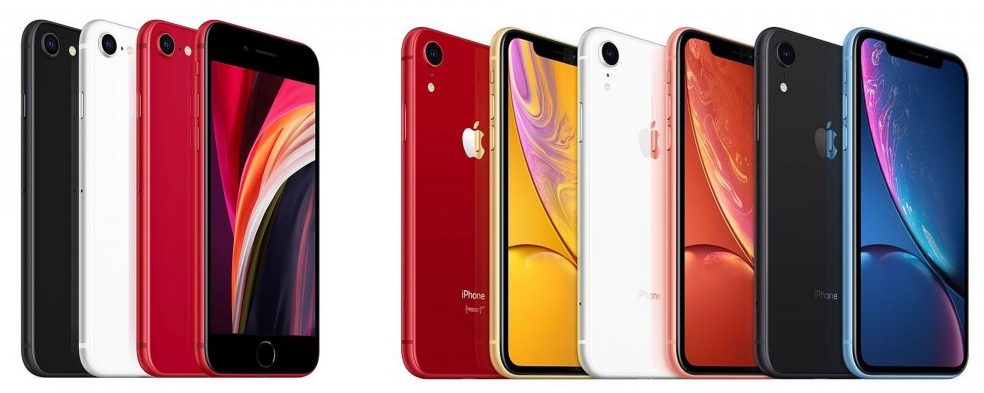After years of rumors, Apple recently launched a new iPhone SE budget smartphone in the market, as a successor to the iPhone SE launched in March 2016. The phone comes with some impressive set of specs and features, for just $399.
With the iPhone 8 series now being discontinued, the next most affordable smartphone from the company after iPhone SE 2020 is the iPhone XR, which was launched in October 2018. If you are planning to upgrade or buy a new iPhone, here’s a comparison to help you choose between the two.

Design & Display
The new iPhone SE has a 4.7-inch display, while the iPhone XR has a 6.1-inch display. However, both of them come with LCD panels offering 326 pixels per inch pixel density, along with True Tone, 625 nits max brightness, a 1400:1 contrast ratio, and support for the P3 wide color gamut.
The iPhone XR comes with a more modern looks featuring nearly edge-to-edge display with a notch on top of the display for the front-facing cameras. On the other hand, the iPhone SE 2020 seems to have the same design as of iPhone 8 with thicker bezels. Another important aspect is that the iPhone SE has a home button present while the iPhone XR doesn’t have a home button, using the newer gesture-based controls for the device.
Chipset
The iPhone SE is powered by the A13 Bionic, which is the latest chipset from Apple and the same one powers the company’s flagship iPhone 11 series. On the other hand, the iPhone XR comes powered by the previous-generation A12 Bionic chipset.
As per the company, the new A13 Bionic is about 20 percent faster than the previous generation chipset and about 30 percent more power efficient.
Camera
Both the smartphones come with a 12-megapixel ultra-wide camera sensor on the back with f/1.8 aperture. However, the iPhone XR features a newer sensor with 1.4µm pixels and larger Focus Pixels, whereas the iPhone SE has the same sensor as the iPhone 8.
However, both of these smartphones come with 4K video recording at up to 60 FPS. On the front side, both of them come with a 7-megapixel snapper taking care of selfies and video calling.
Connectivity
The new iPhone SE supports Wi-Fi 6, i.e. 802.11 b/g/n/ax while the iPhone XR supports Wi-Fi 5, i.e. 802.11 b/g/n/ac. Wi-Fi 6 delivers faster speeds, greater network capacity, improved power efficiency, lower latency, and comes with connectivity improvements and also uses WPA3 security protocol with improved cryptographic strength.
The Dual SIM (Nano SIM and eSIM) smartphones also come with 4G VoLTE support but the iPhone SE supports Gigabit-class LTE, which should offer slightly faster LTE speeds compared to the iPhone XR. They also have Bluetooth 5.0 support.
Battery
According to Apple, the iPhone SE can last up to 13 hours on non-streaming video playback and up to 40 hours on audio playback. On the other hand, the company says that the iPhone XR lasts up to 16 hours for non-streamed video playback and up to 65 hours on audio playback.
Both the devices also come with fast charging support which the company says can charge the device up to 50 percent in just 30 minutes. Both of them also support Qi-based wireless charging.
Touch ID vs Face ID
One of the major difference between the devices is that the iPhone SE has a Touch ID home button for fingerprint authentication, while the iPhone XR uses the more advanced Face ID system for facial authentication.
Bottom Line
If pricing is the key factor for your decision, then you should go for the new iPhone SE which is priced at just $399 even though it comes powered by flagship-grade A13 Bionic chipset. It also makes sense to choose this device if you are upgrading from iPhone 6 or 7 series given that you are already familiar with the home button-based navigation.
The iPhone SE could also get updates for at least one year more compared to the iPhone XR because of the launch year. The only reason you should go for the iPhone XR is if you need a bigger display and a modern design with slimmer bezels, and the new Face ID authentication system.
